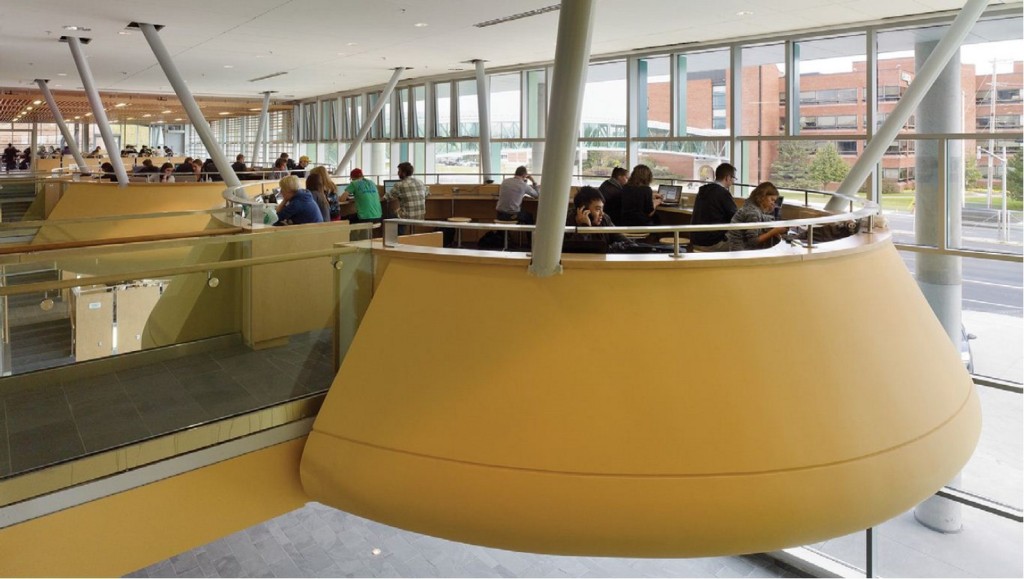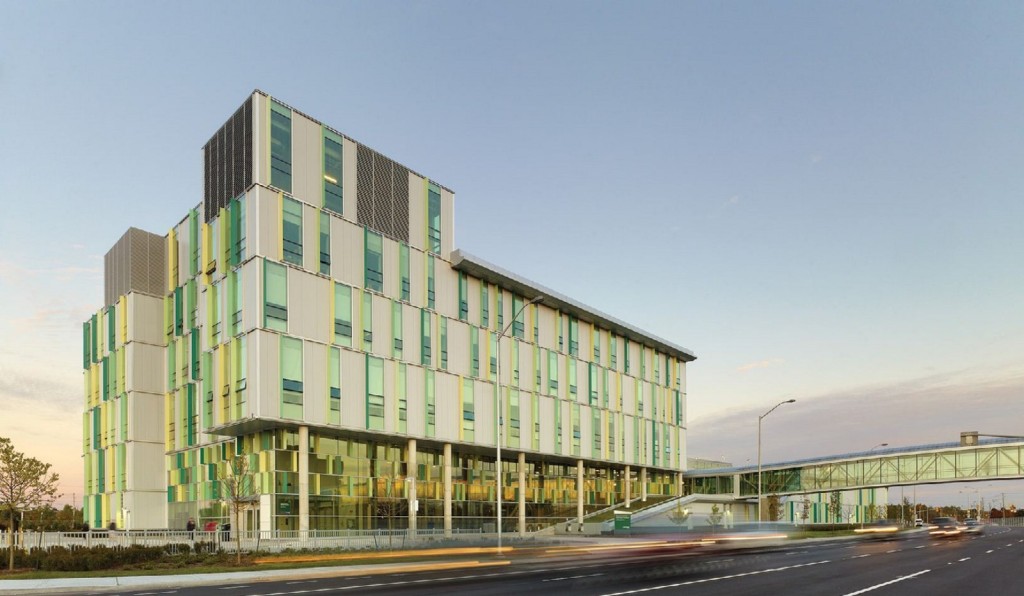The Algonquin Centre for construction Excellence, designed by Toronto-based Diamond Schmitt Architects, is targeting LEED Platinum designation. To date there are only 43 LEED Platinum buildings certified by the Canada Green Building Council. The five-storey, 194,000-square-foot Centre is a showcase of sustainable design, where real-time monitoring of the building’s operations is exhibited for students and the public.
Architect: Diamond Schmitt Architects & Edward J. Cuhaci And Associates Architects Inc.
Location: Ottawa, Canada
Project Area: 194,000 sqf
Project Year: 2011
Photos: Tom Arban

The building has two distinct program and acoustic zones. The first has double-height bays for woodworking, welding, electrical, plumbing, and other trades, and the other features a five-storey tower with labs, laptop classrooms and academic offices centered around an atrium with a 22-metre (72-feet) high biofilter living wall.

The two programmatic zones are divided by student core space with a café and food court, two hanging pod study areas levitating over the main entry hall, and a lounge with terraced seating. A 50mm (two-inch) gap between the two distinct program areas ensures no noise filters into the academic tower.

The 22-meter high Biofilter living wall developed in collaboration with Nedlaw Living Wallsis an important sustainable feature of the building to strive for a LEED platinum rating. The wall cleanses inside air through a natural processing of airborne contaminants through the exposed root system of a mass of tropical plants. Living wall biofilters produce no toxic waste and reduce energy consumption by recycling inside air rather than drawing air from the outside, which has to be heated or cooled depending on the season. The biofilter is connected directly into the air handler for distribution throughout the building.

While the natural landscape delineates the Centre’s form, bold lines and colors amalgamate its edges. Vertically banded panels and windows dictate the walls and are energized by solar sunshades that integrate five distinctive greens, each a modification on the Algonquin College’s green color palette. When viewed in motion, the green fins are seen as a continuously transforming oblique façade.
Against this lush setting, the school functions as a living laboratory. Built-in sensors located throughout the building provide real-time and historical building diagnostics via on-site LCD screens and a unique website, allowing students to monitor the building’s temperature, humidity, air quality, structural load, and other dynamic features of its day-to-day operations.

The building is a unique intersection where students, faculty and the public come together. ACCE delineates zones for the public, for public/college interaction and for private use by students and faculty. By recognizing free access for transit users from grade level and connecting bridges, as well as an independent and secure circulation system for faculty and students, the two worlds are efficiently integrated. In this way, the objective of the Centre, to inspire and to educate, is made possible without compromise to safety or operations. The public has full view of the trades, shops, the real-time exhibits, the resource centre, the bio-filter living wall, and the sky-lit atrium.





